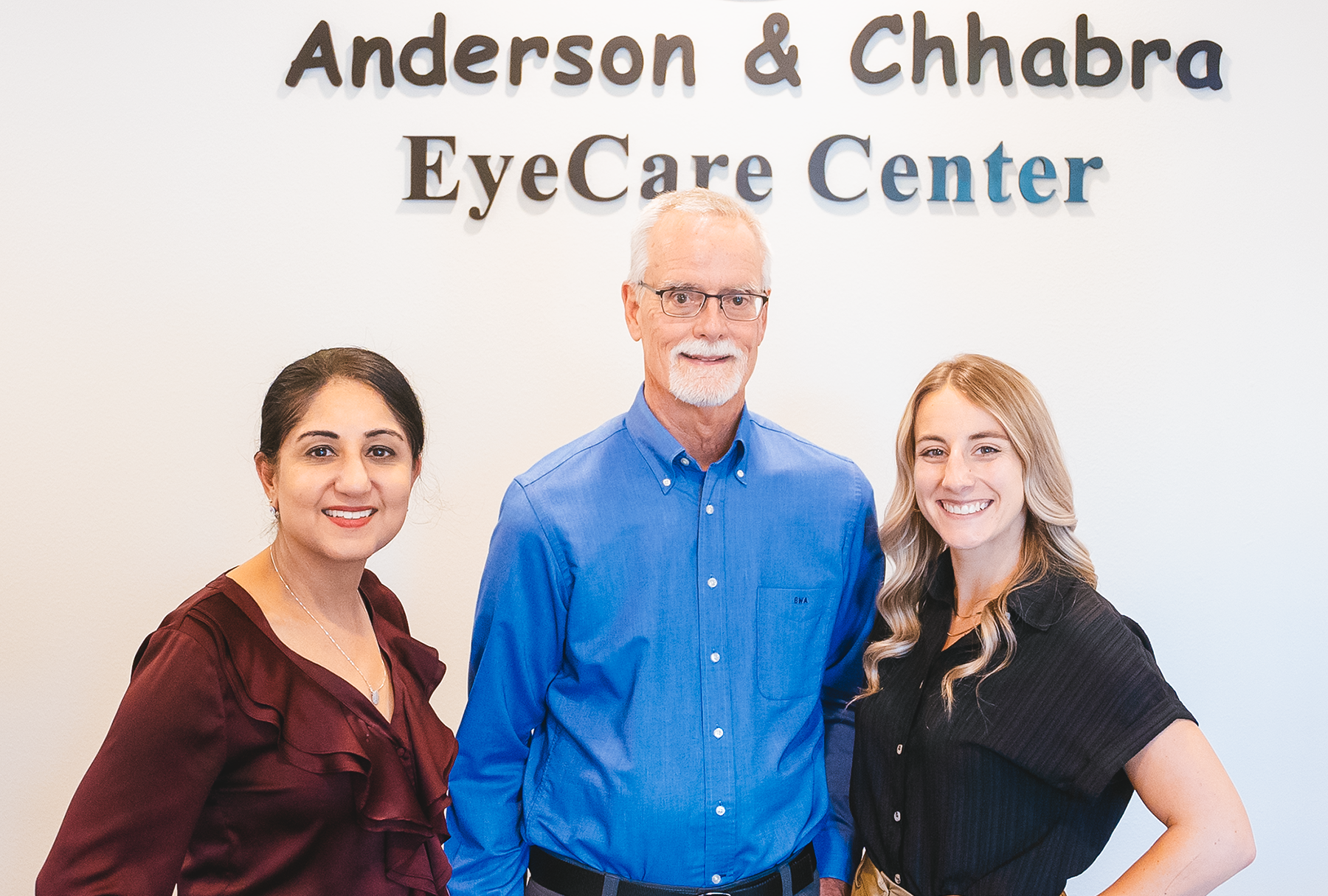
Located in the Red Fern Professional Center off Bruce B. Downs (BBD) Bvd. between S.R. 56 and S.R. 54 is the new second office of Anderson & Chhabra Eye Care Center. The optometrists at Anderson & Chhabra have been helping adults and children in the Tampa area at their original office on W. Fletcher Ave. for more than 40 years and have 70+ years of combined experience.
The newest member of the Anderson & Chhabra team, and the primary optometrist working at the Wesley Chapel office, is Aundrea Snyder, O.D. Dr. Snyder earned her Doctor of Optometry (O.D.) degree from the Pennsylvania College of Optometry located at Salus University in Elkins Park, PA, in 2022. She completed her residency in Ocular Disease and Traumatic Brain Injury at the James A. Haley Veterans Hospital in Tampa in 2023. Dr. Snyder provides primary eye care for adults and children ages 5 and older, as well as specialty contact lens fittings and help for those with double vision or low vision (also known as near-blindness).
Although Dr. Snyder is the main doctor working at the Wesley Chapel office, the other doctors based at the Tampa office also will rotate between both offices. Below is an introduction to the other doctors at Anderson & Chhabra Eye Care:
Dr. Bruce Anderson, O.D., F.A.A.O., DIPL, opened his first practice on N. Dale Mabry Hwy. in Tampa in 1983 and was there for 13 years before moving the practice to the Fletcher Ave. office in December 1996. Dr. Anderson received his O.D. degree from the University of Houston in 1980. He did his residency at the Veterans Administration Hospital in Albuquerque, NM, in 1981. He is a Fellow and Diplomate of the American Academy of Optometry and worked at the Contact Lens and Low Vision Clinics at the University of South Florida College of Medicine in Tampa as their director from 1996 to 2018. Although no longer seeing patients himself, Dr. Anderson is still very much involved with the practice as its mentor and leader.
In 2008, the practice added Neeta Chhabra, O.D., M.S., F.A.A.O., F.S.L.S. Dr. Chhabra received her Master of Science (M.S.) degree in Vision Science and completed her O.D. degree, both from the Ohio State University in Columbus, in 2006. She also had an ocular disease residency at The Omni Eye Services in Iselin, NJ, in 2007 and her contact lens residency from Nova Southeastern University in Ft. Lauderdale in 2008. Dr. Chhabra is a Fellow of the American Academy of Optometry and the Scleral Lens Society and a Member of the American Academy of Orthokeratology and Myopia Control. She also serves as an assistant professor in the Department of Ophthalmology at the University of South Florida (USF) and sees patients at Anderson & Chhabra as young as age 5.
In 2017, Richard Weisenberger O.D., F.A.A.O., DIPL, joined the group. He earned his O.D. degree from Nova Southeastern University in 2016 and completed a residency in Primary Care and Brain Injury at the Haley Veterans Hospital in Tampa in 2017. Dr. Weisenberger is a Fellow and Diplomate of the American Academy of Optometry and an Associate Professor at USF in the Ophthalmology Department.
No story about Anderson & Chhabra would be complete without mentioning a wonderful man who worked in the practice for more than 20 years — Dr. William O. Malone, Jr. Unfortunately, Dr. Malone passed away in 2022. As someone whose entire family was treated by Dr. Malone, I can tell you that he was a loving and gentle man who was always quick with a joke. He loved his patients and his patients loved him. He is very much missed by everyone who knew him.
About The Wesley Chapel Office
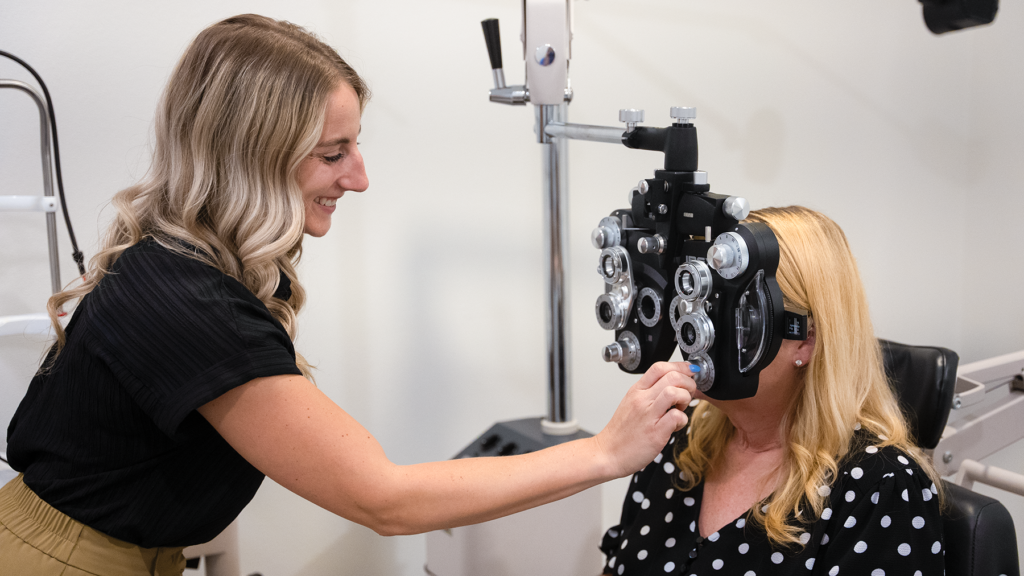
The Anderson & Chhabra office in Wesley Chapel is available for general eye exams. Dr. Snyder will detect, treat and manage a variety of ocular diseases, such as glaucoma, pink eye, dry eye, infections and much more. Although the offices don’t take infants as patients, Dr. Chhabra specializes in children ages 5 and older.
Dr. Snyder says, “The best time to take your child to the optometrist is right before they begin school.” She recommends glasses for children until they are in middle school, when they can transition into contact lenses. She says, “Exceptions can be made for younger children who want contacts earlier and can wear them responsibly; as well as for those who are involved in sports.”
Two specialty services that are offered by the Anderson & Chhabra offices that you don’t always find in other optometric practices are specialty contact lens fittings and working with patients with low vision.
Dr. Snyder says that “contact lenses are available in a variety of shapes and sizes. There are lenses you can wear daily, weekly, monthly and then you have the previously dreaded original hard contact lenses.”
She adds that, “These days, the difference between hard and soft contact lenses is the vision clarity. The clarity you get with the hard contact lenses will never compare with the soft.” She adds that there are many people who will be able to see better with hard lenses, especially those suffering from extreme myopia or astigmatism.
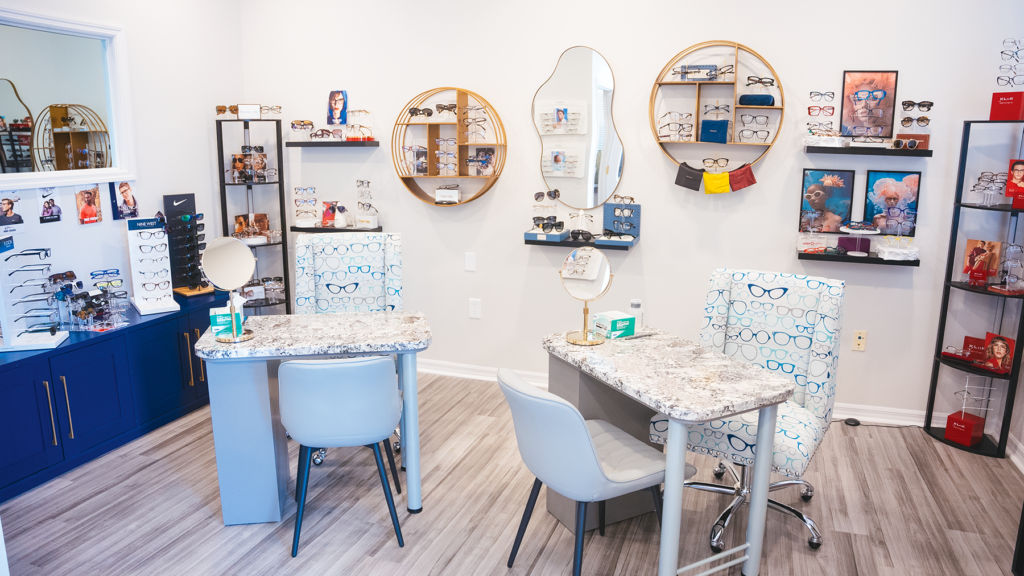
“Hard contact lenses have gotten more comfortable,” she explains. “One of the ways they have changed is the way they are made. Today’s hard lenses are more breathable, come in different sizes and stay in the eye.” In the past, hard lenses would float on the eye and the slightest movement or touch could make the lens fall out. This is not the case anymore. Now, says Dr. Snyder, “Hard lenses stay in place and are made so they don’t touch the cornea, which also makes them more comfortable — and cause fewer problems.”
Dr. Snyder also says that “Hard contacts are primarily used when someone has a high prescription, a deformed cornea, or when soft contacts cannot be used.”
The practice offers services for people with low vision, which is a visual impairment that makes it difficult to function on a daily basis. The condition can affect the sharpness of a person’s vision or the visual field. The World Health Organization defines low vision as “visual acuity between 20/400 and 20/70 or a visual field of 20 degrees or less. Dr. Snyder says that when treating patients with low vision, the Anderson & Chhabra offices work with a few organizations, including the Florida Division of Blind Services, which has the following Mission Statement: “To ensure blind and visually-impaired Floridians have the tools, support and opportunity to achieve success.”
Working With Lighthouse
The Anderson & Chhabra offices also work with Lighthouse for the Blind & Low Vision, which offers training programs designed to help anyone who has recently lost part or all of their vision to gain the skills they need to perform daily living tasks.
Dr. Snyder says that children who are blind or visually impaired need the proper tools and training to succeed in life. Lighthouse will help blind and near-blind infants and young children get prepared for school, and help teens get ready for college, the workforce and independent living after graduation.
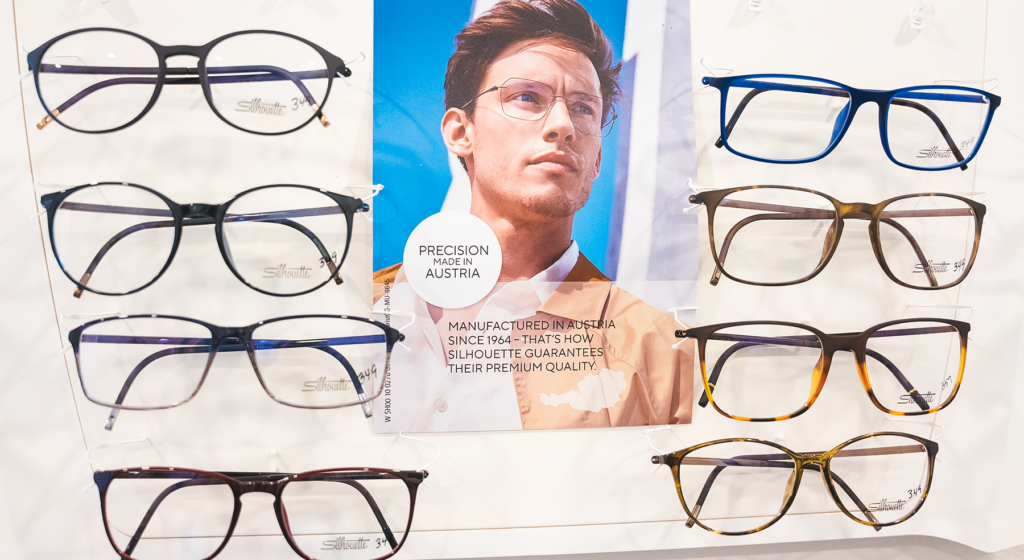
Dr. Snyder says her goal is to help people who are vision-impaired become more comfortable with glasses or devices, including digital magnifiers, which come in a variety of shapes and sizes. A digital magnifier has a camera that is almost like a projector and captures the image for the visually impaired. The image can then be zoomed in on and offer contrast changes, depending upon the user’s needs.
Dr. Snyder says most of these digital magnifying devices unfortunately are not covered by insurance but that’s where Lighthouse steps in to help.
Speaking of insurance, both Anderson & Chhabra offices accept Vision Service Plans (VSPs), EyeMed insurance and Medicare. They also accept most regular medical insurance plans as well, but regular optometric office visits are not usually covered by medical insurance, which comes into play if a lab test that is not covered by vision insurance is needed.
The new Anderson & Chhabra office also has a full optical area, where you’ll find brands such as Burberry, Tory Burch, Gucci, Ray-Ban, Kate Spade, DKNY, Michael Kors, Swarovski and Under Armour, to mention just a few. The optical area also makes prescription sunglasses. Please note that the variety available currently at the Wesley Chapel office is a bit smaller than at the Tampa location.
At this time, the Wesley Chapel office is accepting appointments on Mondays, Tuesdays and Fridays only.
Anderson & Chhabra Eye Care’s Wesley Chapel office is located at 3822 Turman Loop. The Tampa office is located at 719 W. Fletcher Ave. For more information or to make appointments at either office, call (813) 961-2020 or visit AndersonEyeCareCenter.com.



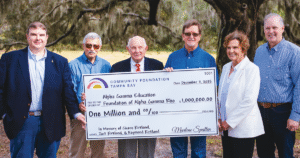
No comment yet, add your voice below!